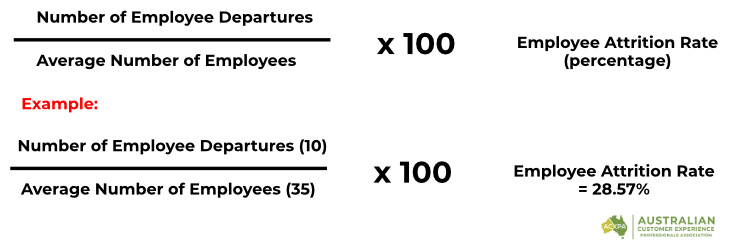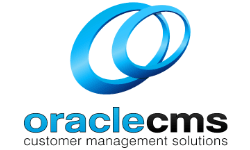Employee Attrition
In the dynamic realm of human resources, the term “employee attrition” holds significant importance.
Employee attrition is the process by which employees leave an organisation, either voluntarily or involuntarily, resulting in a need to fill those vacant positions.
It’s a natural aspect of the business landscape, but excessive employee attrition can lead to disruptions in workflow, decreased morale, and increased recruitment costs.
In this glossary definition, we will delve into the intricacies of employee attrition, its underlying causes, and effective strategies to curb it.
What are the different types of Employee Attrition?
Employee attrition, the process of employees leaving an organisation, can occur in various forms, each influenced by distinct circumstances.
Understanding the different types of employee attrition can help you tailor their retention strategies more effectively.
1. Voluntary Attrition
This type occurs when employees leave the organisation of their own accord. It might be due to factors such as seeking better career opportunities, dissatisfaction with current roles, or personal reasons.
Voluntary attrition can be minimised by addressing employee concerns, providing growth prospects, and maintaining an inclusive work culture.
2. Involuntary Attrition
In this case, employees are separated from the organisation due to reasons beyond their control, like layoffs, downsizing, or job elimination.
Economic downturns, company restructuring, or performance-related issues can contribute to involuntary attrition.
Handling this type empathetically, providing support, and offering assistance in transitioning can lessen its impact on morale.
3. Functional Attrition
Functional attrition happens when an employee leaves, and their role is no longer required to be filled.
This could be due to automation, process streamlining, or changes in business needs.
Ensuring efficient role transitions, upskilling employees, and offering internal mobility options can mitigate functional attrition.
4. Retirement Attrition
As employees reach retirement age, they may choose to leave the workforce.
Organisations can plan for this type of attrition by offering retirement incentives, knowledge transfer initiatives, and succession planning to ensure a smooth transition.
5. Unplanned Attrition
Unplanned attrition occurs when employees leave suddenly due to unforeseen circumstances like health issues, family emergencies, or relocating. Having contingency plans, flexible work arrangements and support systems can help manage the effects of unplanned attrition.
6. Seasonal Attrition
Certain industries experience fluctuations in staffing needs based on seasonal demands.
Employees might leave after fulfilling temporary roles during peak periods. Employers can counter seasonal attrition by offering incentives, clear communication about job duration, and opportunities for rehiring.
7. Internal Attrition
Internal attrition refers to employees leaving one role within the organisation to take up another.
While this maintains talent within the company, it might still impact teams and projects.
Encouraging internal mobility, recognising skillsets, and facilitating smooth transitions can alleviate internal attrition concerns.
Contact Centres, in particular, are often seen as a default internal recruitment pool for organisations as contact centre employees are good at working with customers, can handle multiple systems/applications, are great at problem-solving and have a strong work ethic making them ideal employees to progress within an organisation.
Internal versus External Attrition Rates in Contact Centres
What are the causes of Employee Attrition?
1. Lack of Career Advancement
Employees may leave in search of better career growth and advancement opportunities not available within their current organization.
2. Compensation
Inadequate compensation relative to the market or industry standards can prompt employees to seek better-paying roles elsewhere.
3. Work-Life Balance
A lack of work-life balance can lead to burnout and dissatisfaction, prompting employees to look for positions that offer better equilibrium.
4. Poor Management
Unsupportive or ineffective management can lead to reduced job satisfaction and eventually drive employees to explore other opportunities.
5. Company Culture
A toxic or misaligned company culture can make employees feel disconnected and drive them to find a more culturally fitting workplace.
How do you calculate Employee Attrition?
At first glance, the formula for calculating the employee attrition rate can look at bit tricky so we’re going to give you a nice simple way of doing it.
Assume you started the year with 50 employees, and ended the year with 60 employees.
And over the course of the year, 20 employees left.
This is how you would calculate the attrition rate:

You can do this over a week, a month or a year.
My recommendation is to calculate monthly so you can monitor trends and make decisions accordingly.
Still lost?
It’s OK, we’ve got an Excel calculator you can download that will do the hard work for you!

What is the cost of Employee Attrition?
Understanding the cost of your employee attrition is a critical number in any business and for many people, the cost may surprise you, and not in a good way!
When you factor in the direct costs of replacing someone (i.e. recruitment costs, training etc) plus the loss of productivity as they come up to speed, the impact on productivity for people who need to help them etc it can be quite a confronting number.
To help you, we’ve got an Employee Replacement Cost Calculator that guides you through the various costs so you can determine the exact cost of replacing a single employee in your business.
Once you know the cost to replace a single employee, you can then multiply that rate with your employee attrition rate to work out the total cost of employee turnover in your business.
Download the Employee Replacement Cost Calculator
The Employee Replacement Cost Calculator helps you calculate all the costs of replacing an employee.
To download the Employee Replacement Cost Calculator, you need to be an ACXPA Subscriber (free to join) or an ACXPA Member. Discover which membership is right for you >
Download the Employee Turnover Rate Calculator
The Employee Turnover Rate Calculator helps you to calculate your turnover rate by 3,6,9 and 12 months.
Download the Employee Turnover Rate Calculator here (no sign up required). ACXPA Members get access to a range of exclusive benefits to help elevate their customer experience. Discover which membership is right for you >
Tips to Reduce Employee Attrition
If you have used the cost calculator above, you will have realised there is a huge expense every time an employee leaves your business.
Determining the leading causes of employee attrition in your business is paramount to implementing the right strategies to improve the results.
To help get you started, below are some general tips on how to reduce attrition in the workplace:
- Effective Onboarding: A robust onboarding process can help employees feel welcomed and integrated, increasing their likelihood of staying.
- Improve Work Environment: Foster a positive workplace culture that promotes open communication, respect, and collaboration.
- Competitive Compensation: Ensure salaries and benefits are competitive to retain top talent.
- Career Development: Offer opportunities for skill enhancement, training, and clear pathways for career progression.
- Recognition and Rewards: Recognise and appreciate employees’ contributions through rewards, promotions, and acknowledgments.
- Work-Life Balance: Support work-life balance by offering flexible work arrangements and promote (and invest) in employee well-being.
- Feedback Mechanisms: Establish channels for employees to provide feedback and address concerns.
- Leadership Development: Train and mentor managers to effectively lead, motivate, and support their teams.
- Performance Evaluation: Provide regular performance reviews and constructive feedback to help employees improve and succeed.
What is the cause of Employee Attrition in a contact centre?
When it comes to employee attrition in contact centres, ACXPA publishes a range of industry insights and data to help contact centre managers.
Whilst there is some variation in the order, the leading reasons for employee attrition in a contact centre are:
- Workload
- Compensation too low
- Struggle with tools/software
- Lack of manager support
- No clear career path
- Lack of collaboration/access to supervisors/SMEs
- Didn’t like working from home
- Low CSAT/angry customers
- Concerned that they’ll be replaced by AI/bots
What is the average Employee Attrition rate in a contact centre?
Results vary year to year (check here for the latest results) but as an average, the attrition rate in an Australian contact centre is:
- 26% is the average attrition rate.
- 52% of contact centres average between 10 and 30% attrition.
- 17% of contact centres average 50% or higher.
- Best practice attrition is less than 10% (approx 20% of contact centres).


























